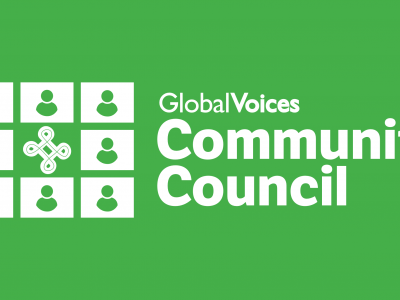The ultimate goal of the Community Council has been for us to create a broadly participatory process that helps us set key strategic issues. Thanks to enthusiastic engagement by the Council, and judging from the post-Council survey, we feel confident that we’re headed along the right path. And, we’re happy to say that the polls mostly give us clear directions.
During our retreat in the U.K. a few weeks ago, the core team together with our news editor Taisa Sganzerla, our incoming managing editor Filip Noubel, and our board member James Deane digested all of the information and ideas generated by the polls and the conversations, identified trends and preferences, started turning them into activities and workable processes, , and built a timeline for their implementation.
Last week we shared preliminary ideas and trends with the Council. Below, for each issue, are the conclusions we’ve reached, and the changes we propose:
Issue 1, Topics and Focus
In response to the question, “Which editorial model most appeals to you?”, two models garnered significant support.
The first choice, Designated Topic, is defined as: “we focus on specific topics identified by the community that align with Global Voices’ values.” This choice had a strong majority preference. 64% voted for this option, while 6% voted against it.
The second choice, Hybrid, is defined as: “ We create an open editorial space for all contributors, who participate by sharing tips for stories. These could be published on a new section of our site, or be part of a pre-publication space for collaboration. We design a process to narrow the focus of these contributions, and turn them into a range of media products: stories, research papers, campaigns, collaborative series, and so on.” This choice also did well. 53% were in favor, while 7% were opposed.
No other option came close to majority support. The 3rd most popular choice, GV Classic, received only 31% positive votes, with 15% opposed.
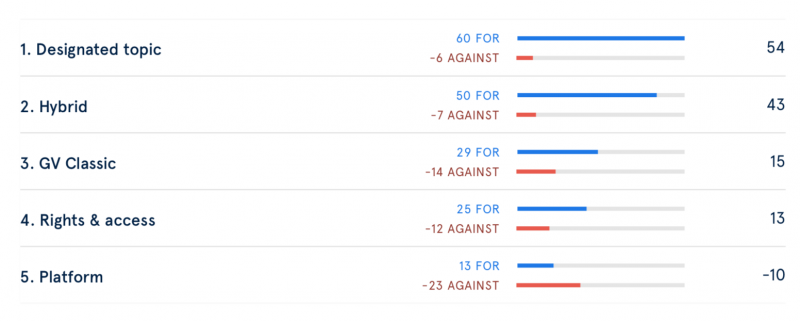
Issue 1, Topic and Focus: Which editorial model most appeals to you?
The two most popular choices indicate a strong preference for more structure and focus into our editorial work. Both point us toward prioritizing some kinds of coverage over others.
While this result gives us a clear direction, it will take us several months of work with the editors to design and test new processes.
Issue 2, Degrees of Professionalization
In response to the question “Which model of participation most appeals to you?”, the Council expressed a strong preference for one model: Diversifying types of participation, which is defined as: “GV creates categories of participants, with a clear distinction between those who are learning and building knowledge, and those who write stories, propose and run editorial and programmatic initiatives. People may advance into the second category when they reach defined thresholds of knowledge, skill and commitment.” 75% were in favor of this option, with 3% opposed. The second most popular option, GV Classic Plus, had only 39% in favor, and 3% opposed.
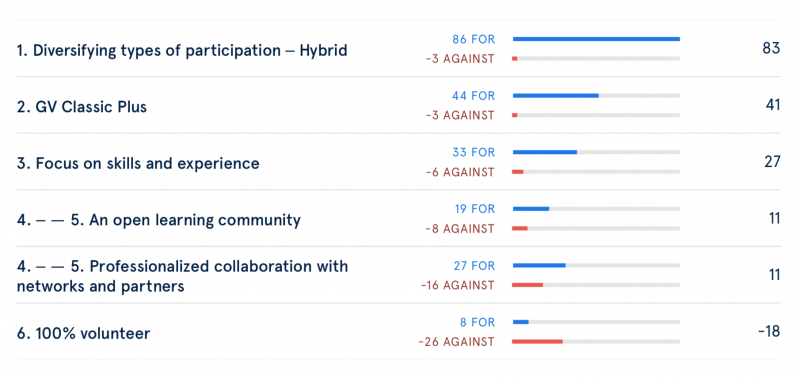
Issue 2, Degrees of Professionalization: Which model of participation in Global Voices most appeals to you?
This response, together with the other poll questions and the free text responses, suggests that we are strongly in favor of building more diverse paths for participation.
We will therefore aim to create a range of roles, and also seek to offer more paid opportunities. We will design these roles to offer opportunities that fit varied experiences, skills and knowledge, and ability to commit time.
Issue 3, Organizational Structure
In response to the question, “Which model of participation most appeals to you?”, two answers received majority preference. These models are somewhat in synch, but will require some work to design a response that is satisfying to both.
The first choice, Membership, is defined as “A decentralized organization, similar to our current structure, with a new “membership” layer that carries greater rights and responsibilities. Contributors may become members, and thereby participate in setting priorities and running projects.” 56% chose this model, with 2% opposing.
The second choice, Hybrid (integration of centralized and distributed models), is defined as “Clear division of authority between global and cross-regional work run by a central authority, and regional efforts run by chapters and/or partners.” 52% supported this model, with 0% opposing.
No other model received even 25% support. These models together with the other poll responses and the free text comments, urge us to create both global and regional opportunities at the programmatic level, and to create a membership structure that supports contributors to participate in community and organizational health and strategy. Other data also show a desire for a strong and well-functioning central mechanism.
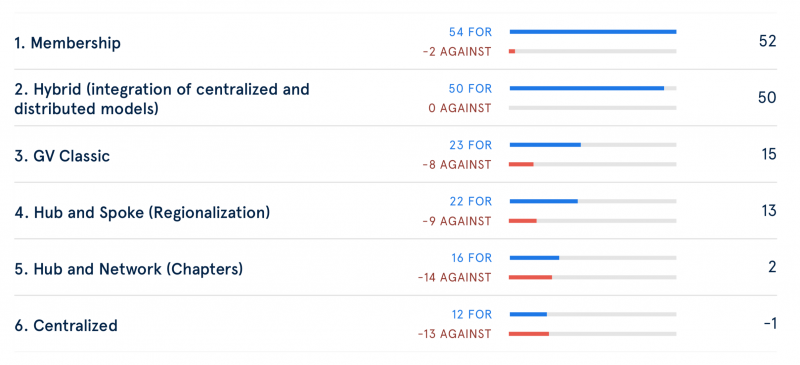
Issue 3, Organizational Structure: Which model of participation in Global Voices most appeals to you?
We therefore propose that Global Voices create a standing Council of Members.
Poll responses indicate a strong preference to expand deliberation and input, and to continue with a Council in some form. We expect to launch the process to create new Council of Members in the first three months of 2019. The purpose of the Council of Members will be to advise and inform. It will not conflict with the authority of GV boards.
Issue 4, Funding
In response to the question, “Which funding model for Global Voices most appeals to you?”, one option received a clear majority, and a second option also had considerable support.
The most popular model, Ethical Organization, is defined as “We prioritize independence from external agendas regarding how we can spend money, and reject funding that seeks to influence our decisions, regardless of source.” 73% were in favor of this model, with 1% opposed.
The second option, Ethical Funder, is defined as “We prioritize ethical principles and behavior of the funder when determining whether to accept money, and reject funding sources that fail to meet high standards, regardless of source.” 52% were in favor of this model, with 4% opposed.
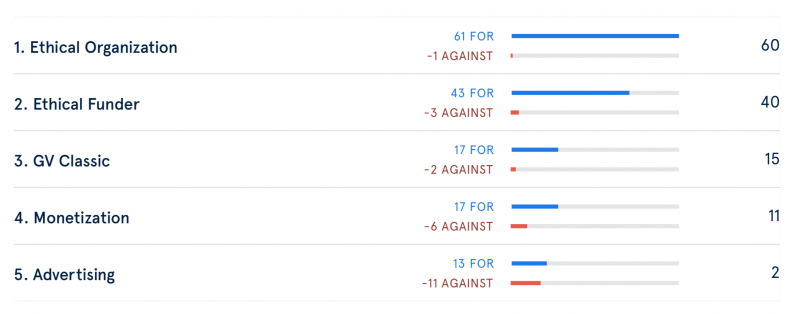
Issue 4, Funding: Which funding model for Global Voices most appeals to you?
Global Voices will adopt an organizational ethics model to determine funding sources.
We will modify and publish our ethics policy for funding, to allow us to take more diverse funding sources. We will make a clear statement of noninterference by funding sources, shared both publicly and with funders and donors, as a means to guarantee our continued independence from external influence in our work. We will refine the checklist of questions we use to evaluate the suitability of funders, which will include questions about the risk and interests of community members potentially affected by the work, the optics of working with the funder, whether or not they seek to use us for another agenda, and an evaluation of the funder’s ethical position.
In the new year we will explore each of these issues in more detail. We will introduce processes for the formation of a Member’s Council, create forums for discussion of policy changes, roll out new editorial processes and experiments, and propose new lines of funding. We look forward to discussing all of the above with you. Thanks again for the incredible enthusiasm and energy of the Community Council members!


